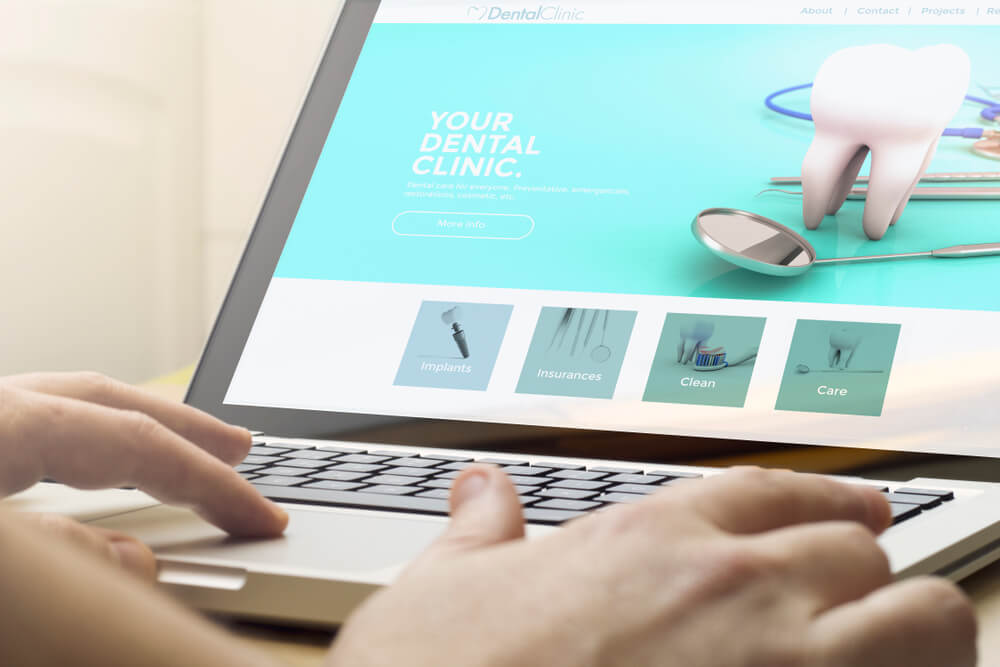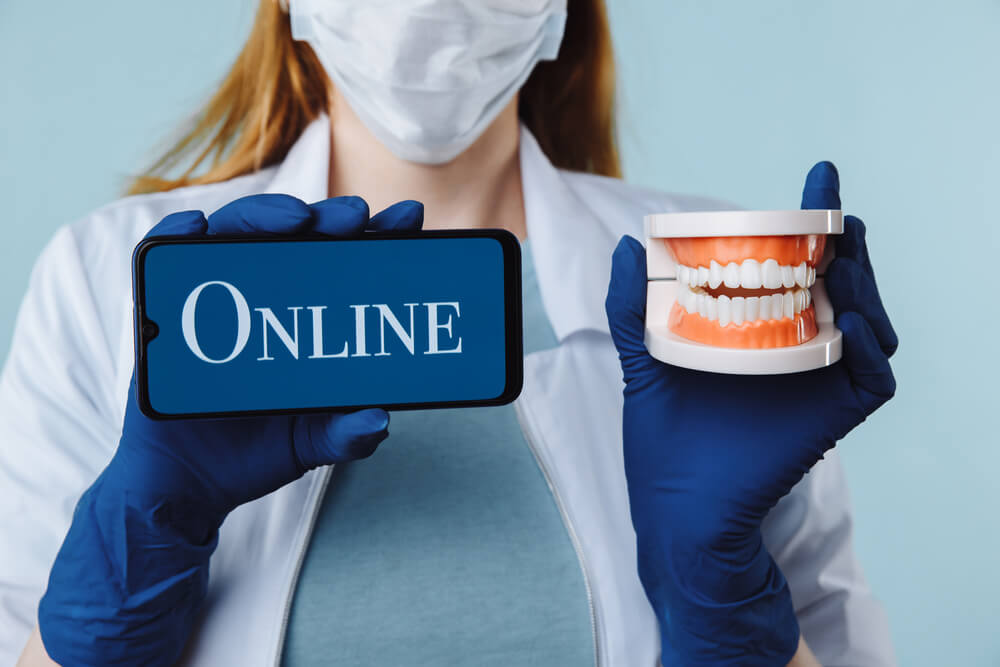
Gone are the days when outbound marketing led to effective lead generation and patient conversion. Dental inbound marketing is taking center stage today and giving outbound strategies the second-row seat.
Inbound marketing doesn’t just bring patients in; it builds your brand, retains a loyal audience, and saves money. Let’s take a closer look at inbound digital marketing for dentists.
Inbound Marketing Versus Outbound Marketing
Outbound marketing is a traditional marketing strategy involving actively searching for patients and pushing your message. Common examples of outbound marketing for dentists involve TV ads, banner ads, direct mail marketing, and print advertising.
Inbound marketing focuses on pulling patients in by showing them that you have solutions to their problems and provide better options than the competition. Common examples of inbound dental marketing are SEO (Search Engine Optimization), content marketing, and social media marketing.
While outbound marketing can yield satisfactory results, it’s less cost-effective than inbound marketing because the latter is patient-driven.
You don’t need to interrupt the patient’s activities to sell them your services; they organically come to your doorstep when they are ready. Inbound marketing tactics involve precise targeting and minimizing spending on leads with low conversion potential.
Stages of Inbound Marketing for Dentists
Inbound marketing tactics are closely connected with the patient’s journey (also known as a buyer’s journey in a non-medical space).
The patient’s journey is a set of stages a prospect goes through, from searching for a solution to their problem (e.g., teeth whitening, cosmetic dentistry) to becoming your patient.
Specific inbound marketing tactics take the patient through each stage of this journey to ensure a loyal relationship and high LTV (patient lifetime value or how much they will spend in your clinic throughout your relationship).
The main stages of inbound marketing are:
Attract
You are drawing patients in at this stage with valuable content and solutions to their problems. It works on patients who recently discovered a dental problem. They search for information online or Google “cheapest dental implants in Boston,” “oral health tips,” or “best dentists near me.”
Convert
Once visitors come to your website, you can start converting them into patients. At this point, you can employ sign-up forms, gated content, effective call-to-actions (CTAs), and other types of content that can help the potential patient make the right choice.
Close
Once patients sign up for your newsletter or share their email addresses, you move in to ensure conversion.
This can involve providing simple online scheduling solutions, sending emails encouraging a patient to schedule an appointment, offering incentives to call your dental practice right now, and more.
Delight
The final stage of inbound marketing focuses on retaining existing patients and increasing their LTV. This can involve a reward system, thank-you messages, personalized follow-up calls, and more.
7 Inbound Marketing Strategies for Dentists

Effective inbound healthcare marketing starts with identifying key strategies to help achieve your practice’s marketing goals. Some of them include the following:
1. Content Marketing
Content is the primary building block of traditional advertising and inbound marketing strategies. Content marketing is creating and distributing content across the proper channels at the right time.
Content can help you attract leads, make conversions, retain clients, and improve brand awareness. Here are some of the top practices to consider:
- Assess the current needs of your practice and identify marketing goals.
-
Work on creating a stellar patient persona (all your content will revolve around it).
- Determine the best channels for content distribution (blog, social media, website).
- Measure the success of your content and adjust your strategy according to analytics.
The best part about content marketing for dentists is the wide variety of topics you can provide valuable information about. Take advantage of your expertise and share it with potential patients.
Pro tip: You don’t need to create new content for each channel. You can repurpose existing content to fit the channel’s requirements or put the content in a new format (e.g., turn text into an infographic).
2. Search Engine Optimization
One of two marketers believes that SEO has the highest ROI of all inbound marketing channels. Search engine optimization is streamlining your website to bring it to the top SERPs (Search Engine Result Pages).
The best practices for dental SEO include the following:
- Paying attention to local SEO (a strategy targeting local patients).
-
Work on reputation management by replying to reviews and comments in your Google Business Profile.
- Using well-researched dental keywords coupled with location (pulling wisdom teeth in Boston, root canal cost in Seattle).
- You are optimizing visual elements on your website to make them appealing to both patients and search engines.
- You are making a sitemap of your website to make it easier for search engines to crawl and rank it.
High-quality, relevant content is a pillar of SEO. You need to create easy-to-read content pieces that bring value to your potential patients.
3. Social Media Marketing
Social media marketing (SMM) is advertising your practice across social media channels. Social media platforms offer opportunities for both organic and paid advertising.
Top practices for dental SMM include:
- Choose the best social media platforms for your needs (Instagram and Facebook usually take center stage. With time, you can extend your efforts to cover other platforms).
- Share patient testimonials and reviews in your posts.
- Post before and after photos (with consent from the patient).
- Provide relevant information about dental health.
- Share information about your team (photos, credentials, success stories)
Organic social media marketing is becoming harder and harder by the minute. To achieve marketing goals, you must mix paid and organic SMM tactics.
4. Web Design
Your website is the foundation of your entire digital marketing campaign. All efforts you invest in marketing tactics bring potential patients to the website where you convert them. That’s why stellar web design is essential.
A better UI (User Interface) can increase your conversion rate by 200%. Here are top tips to help you achieve it:
- Invest in high-quality web design and website management from the start.
-
Work on your visuals, page loading time, and UX (user experience).
- Simplify website navigation and improve content quality.
- Create landing pages for each one of your primary services.
The key to stellar website design is continuous optimization focusing on user experience.
5. Conversion Rate Optimization
You must always work on your conversion rate, no matter how productive your lead generation efforts are. The conversion rate is the percentage of website visitors who become your patients.
Best conversion rate optimization practices for dentists include:
- You are working on your CTAs (e.g., making sure they are catchy, using only one CTA per page).
- You are making it easy for patients to convert (e.g., by implementing online appointment scheduling).
-
You are adding a 24/7 managed chat option to your website to answer questions around the clock.
- Improving website navigation
If your conversion rate is low, consider your lead generation efforts. You may need to review your patient persona if you are attracting low-quality leads.
6. Email Marketing
Email marketing is an inbound marketing tactic with the highest ROI (in some cases, it can reach an impressive 3600%). These strategies work well at the “close” stage of inbound marketing. You can send personalized emails to potential patients with custom-made offers they can hardly refuse.
Top email marketing practices for dentists are:
- Personalize emails to make the patient feel special.
- Create high-quality content for each email message.
- Leverage user-generated content (reviews, before-after photos).
Email marketing is beneficial for converting and retaining your patients, but only if you emphasize personalization.
7. Video Marketing
Video marketing involves using videos to promote your dental services. Anything from expert tips to introducing your team can work well in video format.
Best video marketing practices for dental clinics include:
- You are producing videos of your clinic to communicate a safe, clinical, and credible environment.
- You are introducing your team through videos to create a patient-doctor connection.
- You are using high-quality videos while adding a personal touch.
- Shooting patient testimonial videos with before and after photos.
Today, 86% of businesses take advantage of video marketing since it does a great job attracting, converting, and retaining clients and patients.
Improve Dental Inbound Marketing with a Patient Acquisition Platform
Inbound dental marketing is a complex set of tactics that help you stay ahead of the competition while building brand credibility and securing loyal patients. Doing this on your own or with the help of a traditional marketing agency is becoming harder and harder.
That’s where DoctorLogic’s patient acquisition platform comes in.
This inbound marketing tool is specifically designed to convert leads into patients. Modern HIPAA-compliant technology includes real-time appointment scheduling, digital intake forms, virtual consultations, online payments, and more.
When coupled with assistance from an experienced healthcare digital marketing agency, a patient acquisition platform can help you achieve top marketing results.
To learn more about DoctorLogic’s patient acquisition platform, request a free demo at any convenient time.


